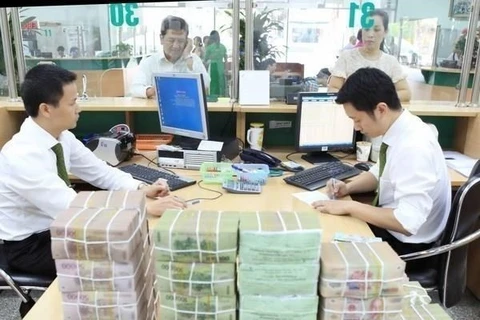 Construction of expanded Cao Bo Bridge in the northern province of Ninh Binh, a key section of the North-South Expressway. (Photo: VNA)
Construction of expanded Cao Bo Bridge in the northern province of Ninh Binh, a key section of the North-South Expressway. (Photo: VNA)Hanoi (VNA) - Vietnam is making all-out efforts to boost the disbursement of public investment as it seeks to post GDP growth of 3 percent this year amid the global economic downturn triggered by the COVID-19 pandemic.
The Government views public investment as an engine for growth that can offset the impact of the pandemic.
The country saw encouraging growth in disbursement in August compared with earlier in the year, with a number of key projects creating spill-over effects on the economy and supporting economic recovery and social stability.
According to the General Statistics Office of Vietnam (GSO), total investment in socio-economic development during the first nine months of this year rose 4.8 percent compared to the same period last year, the lowest figure since 2016 and proof that COVID-19 has taken a heavy toll on all economic sectors.
Meanwhile, investment funded by the State budget grew 33 percent year-on-year, the highest rate since 2016.
Boosting public investment would be an efficient solution to lifting economic growth, given that every increase of 1 percent in public investment disbursement would push up GDP by 0.06 percentage points, then GSO Director Nguyen Bich Lam said earlier in the year.
Data from the Ministry of Finance shows that, as of August, public investment disbursement was less than 50 percent of the annual plan but had risen to 57 percent by the end of September after more than 33.91 trillion VND (over 1.46 billion USD) was disbursed, with 23 cities and provinces nationwide fulfilling over 60 percent of the disbursement goal.
There were 11 ministries and localities, however, that ended September with public investment disbursement at less than 20 percent of the annual plan, the Ministry of Finance said.
National disbursement is still far below the annual target, with rates varying between ministries and localities, according to Deputy Minister of Planning and Investment Tran Quoc Phuong.
He attributed the low disbursement to poor-quality planning and a lack of uniformity that causes waste and inefficiency in infrastructure investment. Site clearance has encountered a wide range of obstacles that have slowed down progress at most projects, Phuong noted.
Phuong expects that the rate of public investment disbursement will reach 95-97 percent, becoming a primary driver for Vietnam to achieve its GDP growth target this year.
To expand disbursement, the government should further empower ministries and localities in developing detailed investment plans for each project, he said.
Auditor Deputy General Doan Xuan Tien said that if legal and institutional barriers are the root cause behind the delays in disbursement, these must be fixed as quickly as possible, as the management of public investment is based on policies and legal mechanisms./.
VNA
























